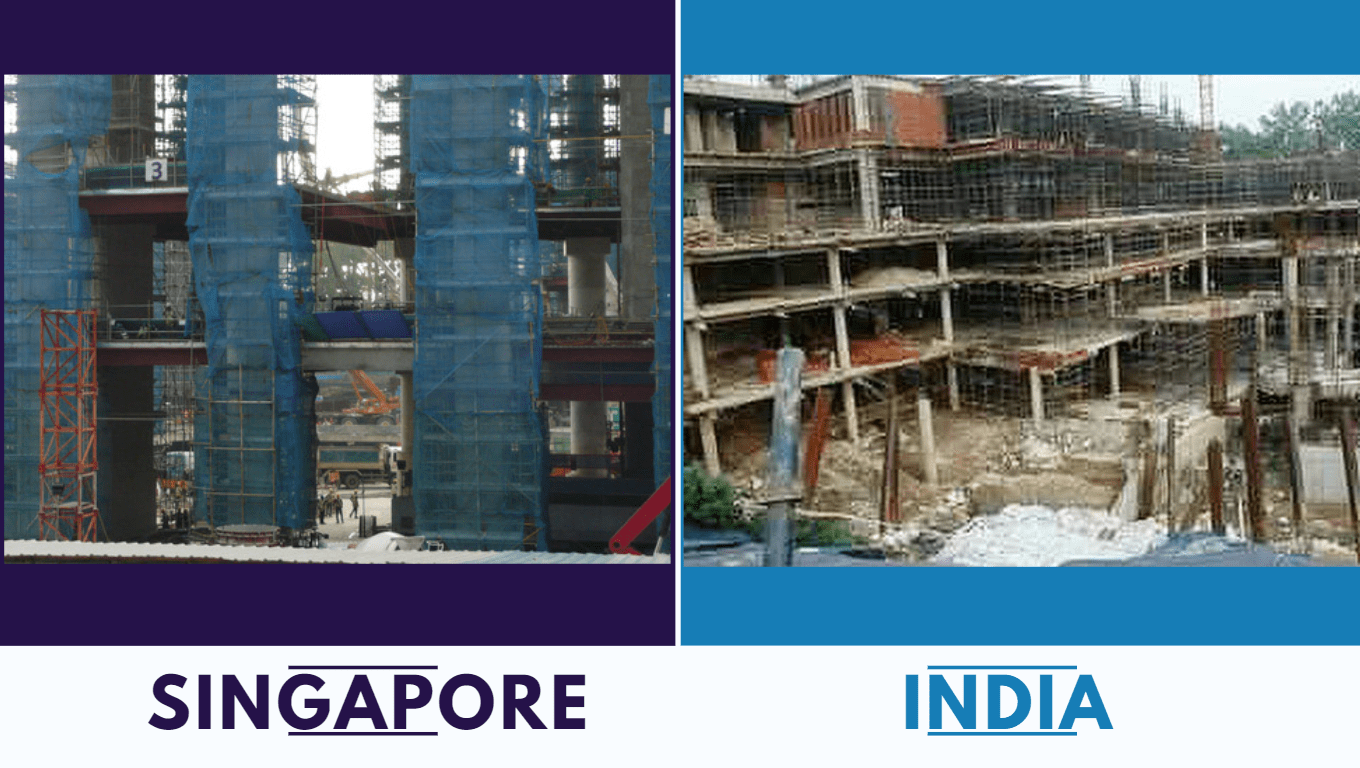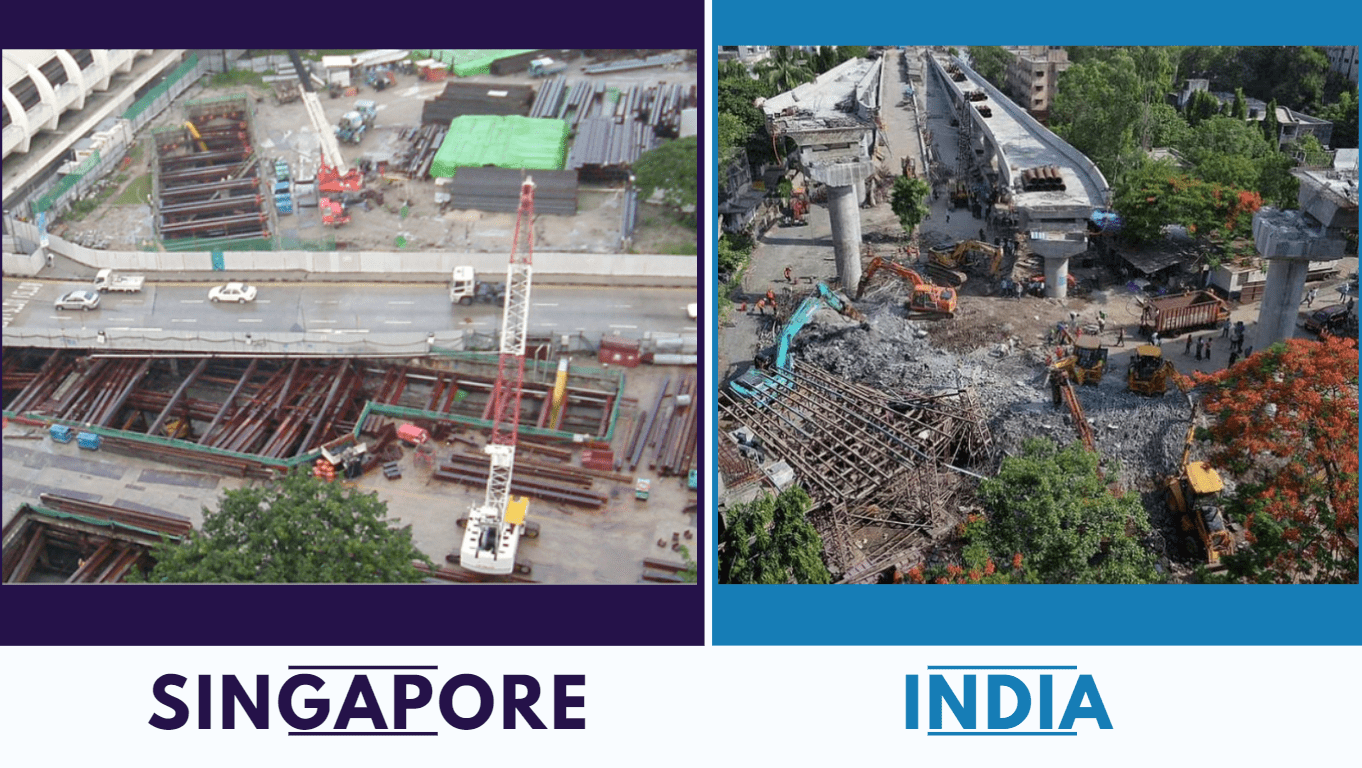Pollution caused by construction sites. Is this solvable?
The back-bone of economic development is infrastructure. All construction sites generate high levels of pollution and this can carry for large distances over a long period of time. As per the Delhi Pollution Control Committee (DPCC) officials, 30 percent of air pollution is caused due to dust which emanates from construction sites.

Source of pollution at Construction Sites
Various construction activities like land clearing, operation of diesel engines, demolition, burning, and working with toxic materials contribute to air pollution.
- Construction dust: Construction and demolition operations contribute to windblown dust problems—sometimes called fugitive dust—onto nearby roadways which can remain in the air for days or even weeks.
- Big source of PM 2.5 on construction sites comes from the diesel engine exhausts of diesel generators, vehicles, and heavy equipment.
- Noxious vapours from oils, glues, thinners, paints, treated woods, plastics, cleaners, and other hazardous chemicals that are widely used on construction sites also contribute to air pollution.
- C&D Waste: The waste comprising building materials, debris, and rubble resulting from construction, remodeling, repair, and demolition of any civil structure. Construction industry in India generates about 10-12 million tons of waste annually.
Is banning construction the solution?
In the wake of severe levels of pollution, a temporary ban on construction and excavation work was enforced under GRAP across the national capital region in November and December last year. Unfortunately, the blanket banning of infrastructure construction mid-way often leaves the site looking like this, with the dust and debris further polluting the environment and making matters worse.


Thus, even as a short-term solution, the construction ban has its shortcomings which stirs up the question of whether it should even be considered a solution. Besides, given that pollution levels are high almost year-round, for a developing country like India, putting a stop to infrastructure development seems counter-productive and unsustainable.
Rules and clearances for Construction projects
The Ministry of Environment and Forest has made it mandatory to obtain environmental clearances for construction projects having a covered built-up area greater than 20,000 sq.m.
The Indian Government has also set forth guidelines and made it mandatory for construction site owners to implement dust preventive measures to minimize the impact on the environment. Here are a few of them:
- Construction material at the site and on the vehicles that carry them should be properly covered.
- Keeping the ground at construction sites wet to let the dust settle and inhibit it from spreading.
- Setting barriers around the construction site and covering mounds of sand with dust barrier sheets.
- Construction companies are being asked to submit reports on the current status of construction and steps being taken by them to comply with the ministry of environment and forests guidelines, 2010, on prevention of dust and garbage accumulation on their construction sites.
- Littering or obstruction to public drains, water bodies, traffic, and direct dumping of construction and demolition (C&D) waste in landfill sites should not be done.
- According to the C&D Waste Management Rules, 2016, the system should contain proper collection of segregated C&D waste from the generator, proper transportation of waste, storage of waste followed by proper processing of waste into recycled or reusable products that have market value, with minimal rejects disposed of in designated landfills.
Unfortunately, there is a lack of adherence to these guidelines and enforcement. Comparing a construction site in India with one in other developed parts of the world reveals how a properly executed construction project can significantly contain the pollution being generated.


The way forward
For real results, we need both a stick and a carrot solution, along with citizen participation.
The government and local municipal corporations must ensure that the construction industry strictly adheres to environmental regulations. As citizens, we can help by reporting projects that do not follow the relevant guidelines. Infrastructure projects must clearly publish timelines, which should be communicated to citizens to keep construction teams accountable. Penalties should be associated with delays.
But we also need incentive systems to motivate construction companies to follow environmentally friendly construction practices. In recent years, some construction firms have opted to incorporate green building into their design and building processes. Design standards with accreditations (such as Well Certification, EDGE certification etc.) and green building rating systems are becoming essential attributes that increase the value of a building, introduce energy efficiencies, and help reduce the environmental impact associated with building materials.
The Green Building Movement by the Indian Green Building Council (IGBC), part of the Confederation of Indian Industry (CII), has rating systems such as:
- US-based LEED certification managed by CII focuses on five factors: Energy savings, water efficiency, CO2 emissions reduction, improved indoor environmental quality, and stewardship of resources and sensitivity to their impacts.
- National Rating System - GRIHA, initially conceived and developed by TERI (The Energy & Resource Institute), has criteria categorized into: (i) Site Planning during building planning and construction stage; (ii) Water Conservation; (iii) Energy Efficiency; (iv) Waste Management; (v) Environment for good health and well-being.
Incorporating the carbon footprint, pollution, and waste created during the construction process into such certification systems can help educate and incentivize construction projects to adopt more environmentally friendly practices. As citizens, we can encourage our employers and choose to live and work in green buildings.
In Conclusion
We at Airveda believe that pollution due to construction can be significantly reduced through proper enforcement, incentives, education, and strong citizen participation. What do you think? What can we as individuals and the government do to transform construction and infrastructure development into non-polluting sources? Please write in the comments below. We would love to hear from you.

